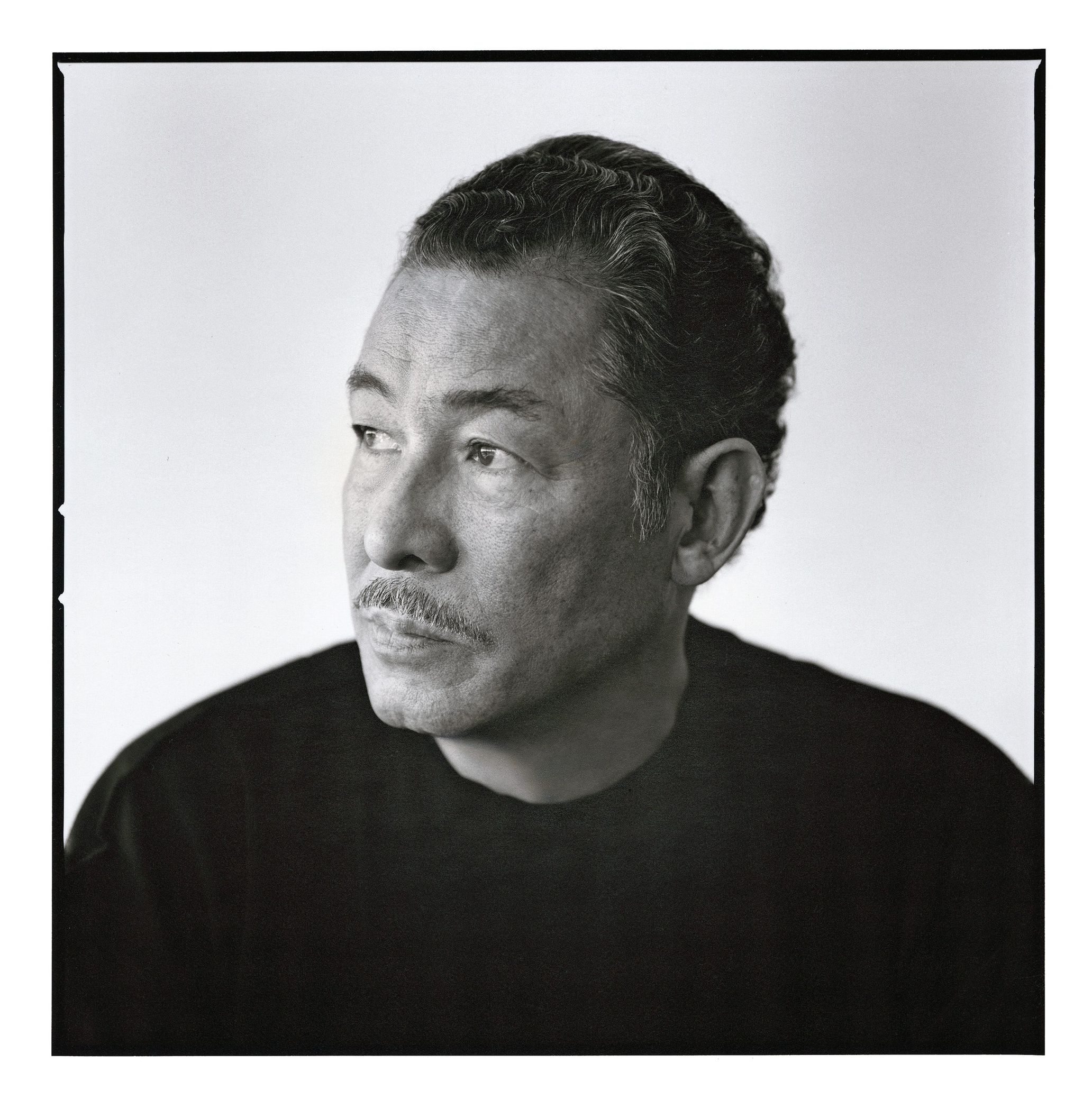
Issey Miyake, a man of both the past and future
Issey Miyake has left us. The day his passing was announced, people in the fashion industry all over the world posted words of condolences online. People praised him, saying he was a revolutionary and legendary designer. They wrote about their memories of the designer, such as how they met him. As someone in fashion who’s never directly worked with Issey Miyake, some of the surface-level messages of condolences didn’t sit right with me, as they didn’t fully capture his work. I’m writing this piece today to verbalize what I felt then. I hope this paints a picture of who Issey Miyake was and could positively contribute to Japanese creativity.
From designing to inventing clothes
People in the Japanese fashion industry feel a strong emotional connection to designer Issey Miyake. The younger generation associates his name with being a past designer, which isn’t necessarily bad. Issey Miyake became a person of the past–an icon–early in his career because of his distinctive creativity. His innovative spirit can be broken down into three features.
First, he was an inventor of various fashion products. We can split Issey Miyake’s career as a fashion designer from his pre-Pleats era in 1994 and post-Pleats era. Kenzo Takada was based in Paris and accepted as a designer through an Orientalist gaze, while Issey Miyake was based in Japan. As a result, he created the catalyst for brands in and from Japan to become approved in Paris. Before Issey Miyake started Pleats Please, he incorporated contemporary art ideas into his Japanese identity in search of a new expression of physicality. Unlike Kenzo Takada, I believe he neutralized the Orientalist “clothes made by people from the East” view by engaging with contemporary art ideas. He poured his heart into building contemporary fashion, namely deconstruction, a technique Asian designers still use in their work. Issey Miyake cultivated the practice of deconstruction, and the likes of Rei Kawakubo and Yohji Yamamoto harvested it once the technique was ripe enough. A satirical poem from the Edo era: “Oda pounded the rice, Hashiba made the rice cakes, and Tokugawa ate them while he sat there.” In the context of deconstruction in Japanese fashion, Kenzo Takada could be likened to Oda, while Issey Miyake could be compared to Hashiba.
The designer’s creative trajectory took an interesting turn after he created Pleats. One well-known idea of his is how he used one piece of fabric for clothes. In the East and West, people probed the relationship and space between a person and their clothes. To get to the root of this relationship, they worked to develop materials, starting with threads. It’s not a stretch to say Issey Miyake was the first brand to produce products with the overarching concept of using one piece of fabric per clothing item. His research, which started around 1988, came to fruition in 1994 as Pleats Please Issey Miyake. Mariano Fortuny (1871-1949), a Spanish designer and artist who was based in Venice, made dresses out of pleats. By having the material development and a manufacturer in place, Issey Miyake was able to recontextualize and mass-produce the idea behind Fortuny’s dresses in a contemporary manner (with the cooperation of Shiroishi Polytex in Miyagi prefecture).
After that point, Issey Miyake deviated from the tradition of designers updating the context of Parisian fashion history each season. His innovative spirit is reflected in how he came up with inventing fashion products that people could wear for a long time. A-POC (A Piece of Cloth), in which self-produced clothes were made with a computer using a tube of fabric, cemented his position as an inventor. The project was founded by Dai Fujiwara, who was a staff member in his fourth year at the brand (and later the creative director of Issey Miyake), under the leadership of Issey Miyake in 1998.
Thanks to Issey Miyake’s collection in Paris in 1999, which introduced A-POC, the brand showed the world that it develops and showcases products instead of being a fashion house that simply showcases clothes every season. However, it came with a cost: after reaching the apex of fashion, I’m sure he found it difficult to move forward with the context of fashion that already existed then. It’s impossible to develop new inventions on par with Pleats and A-POC every six months for the runway. While his long-lasting designs transcended the ebb and flow of trends, they were incompatible with the fashion industry because the industry demanded something new every season. Revolutionary inventions become a thing of the past once the media and people get used to them, as they only pay attention to what’s new. Because of his inventions, Issey Miyake became more than a designer’s name; his name became a world-renowned symbol.
Issey Miyake: a doer and thinker
Issey Miyake’s second innovative attribute is how he spread the value of fashion among cultural figures abroad and the masses in Japan and otherwise. Today, most people associate fashion with contemporary art or product design, but when Issey Miyake worked in the field, people considered it dressmaking rather than design. He put time and energy into improving the status of fashion design in society. The designer devised a way of thinking similar to a contemporary artist: producing products using one fabric and concept. We could view his work with artists and designers like Lucie Rie, Ikko Tanaka, and Irving Penn as him joining hands with other fields to set a higher standard for fashion. They weren’t mere collaborations. It might make more sense to say he tried to “design” society’s recognition of fashion. Since its heyday, his clothes have become beloved by not only celebrities like actors but also many artists and cultural figures in and out of the country, such as architect Arata Isozaki and Steve Jobs. This phenomenon stems from none other than his long-standing community and cultural relevance.
The pioneer, Kenzo Takada, was a fashion designer, but Issey Miyake was someone who unconsciously provided uniforms to those who related to his world, which wouldn’t have been possible without society’s increased understanding of fashion. The act of making clothes that end up as uniforms has been passed down to future designers.
He could connect with communities in different fields because of his extraordinary proactiveness. One incident gives us a glimpse of this character trait. When he was a 22-year-old Tama Art University student, he submitted a questionnaire about why fashion wasn’t part of the World Design Assembly held in 1960. After graduating from university, he left Japan to study at Ecole de la Chambre Syndicale de la Couture in Paris in the 60s and became an assistant at Givenchy. This might not strike some people as a noteworthy thing, as it’s not rare for Japanese people to graduate from prestigious schools and work at fashion companies like LVMH and Kering and even prominent tech companies in Silicon Valley such as GAFAM and Tesla. But Issey Miyake went to Paris when there still weren’t many Japanese people to work at Givenchy, the brand that provided clothes for Audrey Hepburn in the 60s and made its way up as the top haute couture fashion house. After his work as an assistant, he flew to America after seeing the potential in ready-made clothes. He worked with Geoffrey Beene, established an office, entered the market in Paris, and expanded into the international market in just four years. The designer’s ability to take action was extraordinary indeed. When Kanye West and Virgil Abloh went to Antwerp to knock on Raf Simons’ door, so to speak, it became news in the fashion world. Similarly, Issey Miyake excelled at going to places he deemed necessary and knocking on doors to get people involved.
Issey Miyake, a businessman who assembled a group of people and nurtured them
Issey Miyake’s third innovative attribute is his work as a businessman. While he was still working as a designer, pushing out products for L’eau De Issey, the company’s perfume line and money maker, and Pleats Please, he left the in-house designers in charge of the Issey Miyake brand. For many designers in their 30s and 40s, the Issey Miyake products they remember well were made under Naoki Takizawa as well as Dai Fujiwara post-2007.
Issey Miyake stepped away from the spotlight around 1999 to 2000, an act that required courage, considering he was 60 years old. He appointed Naoki Takizawa to be the creative director of the menswear line in 1993 and the womenswear line in 1999. In the following year, 2000, he put Nobuyuki Ota, a journalist with knowledge about New York and the director of Matsuya Ginza, in charge of running the company. I digress, but there’s an anecdote in which Nobuyuki Ota loved to wear a Commes des Garçons suit despite being the president of Issey Miyake. This exemplifies Issey Miyake’s open-mindedness.
Further, he established A-net, a spinoff group comprising in-house designers of Issey Miyake, in 1996. As a result, talents such as Akira Onozuka (Zucca), Chisato Tsumori (Tsumori Chisato), Kosuke Tsumura (Final Home), Kazuaki Takashima (Ne-net), and Eri Utsugi (mercibeaucoup) came out of the group. Akira Onozuka’s Zucca defined an era as a Japanese brand and became a lucrative business. Designers outside of the Issey Miyake brand have become successful, too, such as Maiko Kurogouchi (Mame Kurogouchi), Yusuke Takahashi (CFCL), and Keita Ikeuchi and Mihoko Mori (andwander).
As far as I can tell, no other designer, domestic or otherwise, has kept their independence and ethos while still working in the company and simultaneously leaving the company’s direction up to a successor. Issey Miyake was able to step back while maintaining his presence; this is one of his ingenious feats.
From a narrow scope to a broad one
As a fashion designer, Issey Miyake peaked in 2000 and left the spotlight. By inventing innovative products, he abandoned the traditional role of the fashion designer and became a person of the past. Viewing Issey Miyake from this lens, I feel like what he had done as a designer could be summed up as doing a wide range of fashion designs. He worked not only with clothes. Thanks to him paving the way, what used to be called dressmaking in Japan became costume design, “mode” (akin to high fashion), and fashion. He changed the public’s perception and broadened the gates for young people to work in the industry. As I write this, someone in Japan or another Asian country is telling their parents they want to become a fashion designer. The parents must be picturing Issey Miyake, a role model, in their minds. Fashion design has caught up with Issey Miyake and is now at the forefront of the field of design. His range of designs shifted from the now to the future. He was a fashion designer who designed clothes and tried to change the face of society.
Issey Miyake was one of the people who came up with the concept of using one fabric. He was an atomic bomb survivor born in Hiroshima and an Asian person who overcame adversities to create designs for the world. I can’t determine whether this was his intention, but his designs eventually ranged far and wide. Issey Miyake designed an ecosystem within the brand and explored the limits of expanding people’s perception of fashion in society. We and future generations will surely encounter the areas Issey Miyake designed.
“We almost never think of the present, and if we do think of it, it is only to see what light it throws on our plans for the future. The present is never our end. The past and the present are our means, the future alone our end.”
Blaise Pascal, Pensées (1623-1662)

